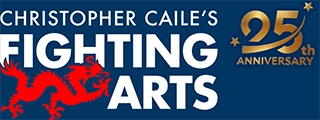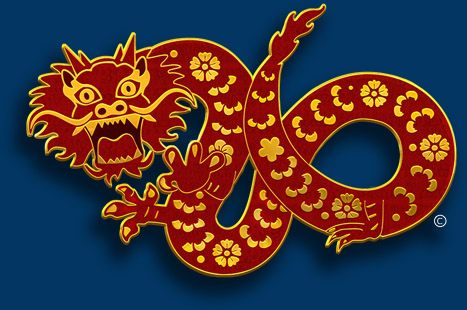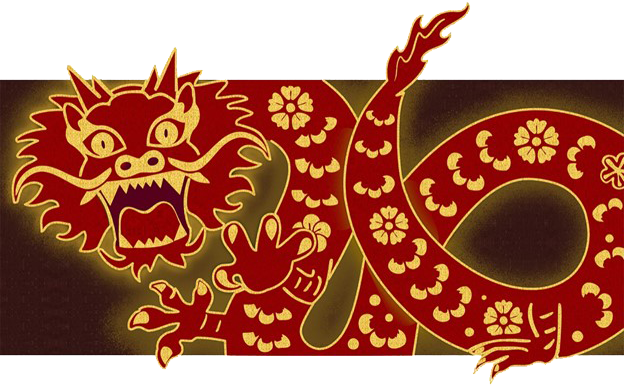How To Handle Telephone Inquiries to Your Martial Arts School
By Christopher Caile
Does your martial arts school have an organized plan to boost enrollment? Most do not. As a result, many potential new students never sign up.
Inquiry phone calls about your school, classes and costs are a critical first step in any martial arts sales/marketing strategy. How you handle them and what you say can make the difference between getting the student or not.
The "How Much Does It Cost Question"?
Potential students often call around to various martial arts schools on a shopping expedition. Often they start with a cost question, because they really aren't sure what to ask. This can be a trap, because if you don't motivate them to actually visit, they will never know who or what you are and what you are offering. They will judge you on cost alone.
Thus try to engage the caller in conversation so the whole cost question becomes less important. But sometimes the caller persists on talking price. When this happens it is best to answer by giving a ballpark cost answer such as:
"We aren't the cheapest or the most expensive, but we have several different programs and payment plans. I will have someone explain them as well as our schedule to you if you are interested. Why don't you come in and observe a class, and we can explain our various plans. Better yet, try a class out to see if you like it."
If you just answer the caller's cost question, this gives the cart before the horse. Cost will have less importance if the person finds out that he likes you school or prefers it to others.
Strategy Of Response
A basic strategy is, as quickly as possible, to begin to ask questions of callers rather than the other way around. This way you can find out a lot of information from your callers and build rapport. Exchanging information is helpful to the callers too. By talking charge you can guide them through many of the important answers and also get a chance to invite them to visit or take a trial lesson or lessons.
No matter what callers ask, ask how can you help them. Then let them know your name and ask who you are speaking with. Write their name and other information on a Caller Information Form. This creates a record for later use.
Using A Caller Information Form
Creating a Caller Information Form shows you have put thought and planning into your overall sales and new student recruitment strategy. It is a way to plan how you respond to incoming inquiry calls.
This form should include:
1- The caller's name, address, telephone number, date of the call and other pertinent information.
2- The time and date of a school visit or free class or classes.
3- The name of the person who talked with the caller on the phone and the person to ask for when he or she visits.
4- A list of questions that are often asked and how to deal with them.
5- Your own list of questions. Under each question list how to respond if callers say "yes," or "no" to your question, or include a list of typical responses, which can be checked off for each caller.
Here are some typical questions you could use. Each questions should also a list of possible responses (that can be checked off).
- How did you hear or know about our school?
- Are you inquiring for yourself or another?
- Is this for an adult or child?
- What are your goals in studying ____?
- Do you have any martial arts experience?
- Did you ever visit the school before?
Your Goals
During the phone call your first goal is to build rapport and interest with the caller. This leads you to your second, and most important goal: to get the student to visit your school — to look at the facility, observe a class, talk to other students and instructors. This is what sells. Words alone through a handset seldom do.
You might also suggest a trial class or classes. You will be surprised by the number of people who will take you up on this.
Building A Caller's Commitment
In either case, with a visit or trial class, don't leave the invitation open ended. If you leave it vague, the caller won't give any weight to the offer and won't make any commitment to visit.
It is much more effective to make a specific date and time for the visit. Also, tell the person the name of someone who will be expecting them, so when they arrive they can ask for him or her.
At this point it should be relatively easy to get a call-back number and/or e-mail address. If they aren't really interested in showing up, they won't give you this information. But, if they give it to you, it also symbolically reinforces the commitment the caller has made.
Finish the call with a confirming question, "So XXXXX (name) will meet you on XXXXXX (date and time) to show you around?"
If a person has agreed to a specific date and time of visit and then confirmed it with a positive commitment answer, he or she has given a small verbal commitment which has been shown to be effective.
Your appointment thus becomes just like one made for an doctor or accountant, or business meeting.
The day before the visit or trial class it helps to call and remind the of the appointment.
Do's and Don't Of The Telephone Personality
If you are answering calls directly, or calling back those who have left messages on your answering machine, there are a few important things to remember.
How you answer the phone is critical. So in a warm, friendly voice say something like, "Hello, this is — the name of your school — how can I help you?"
Avoid answering the phone with a sharp or hard "Hello", "Yeh," or other short, unprofessional greeting. This is a real turn off. It immediately creates a negative image.
Present a positive vocal image. Just as a person's visual image gives an immediate impression, a vocal one does too. Thus, your phone personality is critical. People respond positively to a friendly, cheerful and enthusiastic voice, to someone who is helpful. So if you can, choose a person to answer the phone who has these qualities. A friendly voice draws the caller into a conversation and makes him or her want to listen to more.
Use the caller's name in your conversation. People like hearing their name. It adds friendliness and makes them feel more welcome. Also show interest in the caller, his interest and background. People will appreciate your interest and will feel welcome.
Don't rush callers, or act in a hurry. Be patient and listen.
Don't interrupt to make your point. You might be right, but the caller "takes away a point" every time you do this.
Don't over sell. Never boast about your school, or try to convince your caller how good you, your school, style, teacher or art is. Here again, you may be right, but you may sound arrogant, even rude. You will also probably produce a mental hang up and lose the potential student.
Remember the initial call to your school is an important step in your overall recruitment of new students. It is often taken for granted with little thought on how to handle the call and what to say. Remember that the goals for any incoming call from a potential student are two fold. First to build rapport and interest. This leads to the second and critical goal: to get the caller to visit or take a trial class or classes.

About the Author Christopher Caile
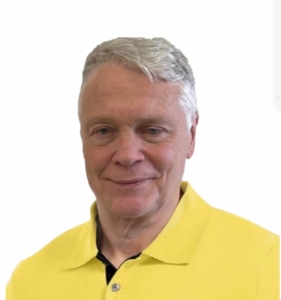
Screenshot
Christopher Caile is the Founder and Editor-In-Chief of FightingArts.com. He has been a student of the martial arts for over 65 years.
He first started in judo while in college. Then he added karate as a student of Phil Koeppel in 1959 studying Kempo and Wado-Ryu karate. He later added Shotokan Karate where he was promoted to brown belt and taught beginner classes. In 1960 while living in Finland, Caile introduced karate to that country and placed fourth in that nation's first national judo tournament.
Wanting to further his karate studies, Caile then hitch hiked from Finland to Japan traveling through Scandinavia, Europe, North Africa, the Middle East and South and Southeast Asia — living on 25 cents a day and often sleeping outside.
Arriving in Japan (1962), Caile was introduced to Mas Oyama and his fledgling full contact Kyokushinkai Karate by Donn Draeger, the famous martial artist and historian. Donn also housed him with several other senior international judo practitioners. Donn became Caile's martial arts mentor, coaching him in judo and introducing him to Shinto Muso-ryu under Takaji Shimizu.
Caile studied at Oyama's honbu dojo and also at Kenji Kurosaki's second Tokyo Kyokushinkai dojo. In his first day in class Oyama asked Caile to teach English to his chief instructor, Tadashi Nakamura. They have been friends ever since. Caile also participated in Oyama's masterwork book, "This Is Karate."
Caile left Japan with his black belt and designation as Branch Chief, the first in the US to have had extensive training in Japan directly under Oyama Sensei. As such, Oyama Sensei asked him to be his representative on visits to his US dojos to report on their status.
A little over a year later, Nakamura, Kusosaki and Akio Fujihira won an epic David vs. Goliath challenge match against Thailand's professional Muay Thai Boxers in Bangkok, Thailand, thrusting Kyolushinkai and Nakamura into national prominence.
Back in the US Caile taught Kyokushinkai karate in Peoria, Il while in college and later in Washington, DC. while in graduate school. Durimg this time Shihan Nakamura had moved to New York City to head Kyokushinkai's North American Operation.
In 1976 when Kaicho Tadashi Nakamura formed the World Seido Karate organization, Caile followed. Living then in Buffalo, NY, Caile taught Seido karate and self-defense at the State University of New York at Buffalo (SUNY Buffalo) for over 15 years where he also frequently lectured on martial arts and Zen in courses on Japanese culture.
Caile moved to New York City in 1999 to marry Jackie Veit. He is now an 8th degree black belt, Hanshi, training in Seido Karate's Westchester, NY Johshin Honzan (Spiritual Center) dojo. In Seido Caile is known for his teaching of and seminars on kata applications. He also produced a 14 segment video series on Pinan kata Bunkai currently available to Seido members.
Caile is also a long-time student and Shihan in Aikido. He studied in Buffalo, under Mike Hawley Shihan, and then under Wadokai Aikido's founder, the late Roy Suenaka (uchi deshi under Morihei Ueshiba, founder of Aikido and was Shihan under Tohei Sensei). In karate, Suenaka (8thdan) was also an in-house student of the Okinawan karate master Hohan Soken.
Having moved to New York City, Caile in 2000 founded this martial arts educational website, FightingArts.com. Twenty-five years later, in 2025, it underwent a major update and revision.
For FightingArts.com and other publications Caile wrote hundreds of articles on karate, martial arts, Japanese art, Chinese Medicine and edited a book on Zen. He also developed relationships with a cross section of leading martial arts teachers. Over the last four decades he has conducted extensive private research into karate and martial arts including private translations of the once secret Okinawan hand copied and passed on Kung Fu book, the Bubishi, as well as an early karate book by the karate master Kenwa Mabuni. He periodically returns to Japan and Okinawa to continue his studies and participate Seido karate events. In Tokyo he practiced (with Roy Suenaka Sensei) in a variety of aikido organizations with their founders – including private interviews and practices at the Aiki-kai Aikido Honbu dojo with the son and grandson of aikido's founder, Doshu (headmaster) Kisshomaru (an old uchi-deshi friend) and his son, Moriteru Ueshiba and in Iwama with Morihiro Saito. On Okinawa he studied Goju Ryu karate under Eiichi Miyazato, 10th dan founder of Naha's Jundokan, and also with Yoshitaka Taira (who later formed his own organization, who specialized in kata Bunkai. While there Caile also trained with Hohan Soken's senior student, Master Fusei Kise, 10 dan as well as with the grandson of the legendary karate master Anko Itosu.
Caile's other martial arts experience includes: Diato-ryu Aikijujitsu and Kenjitsu, kobudo, boxing, Muay Thai, MMA, Kali (empty hand, knife and bolo), study of old Okinawan Shoran-ryu & Tomari body mechanics, study of old Okinawan kata under Richard Kim, study of close quarter defense and combat, including knife and gun defenses, Kyusho Jitsu and several Chinese fighting arts including 8 Star Praying Mantis, Pak Mei (White Eyebrow), and a private family system of Kung Fu.
Caile is also a student of Zen as well as a long-term student of one branch of Traditional Chinese Medicine, Chi Kung (Qigong). As one of two senior disciples of Chi Kung master Dr. Shen (M.D., Ph.D.) Caile was certified to teach and practice. This led to Caile's founding of the The Chi Kung Healing Institute on Grand Island, NY. In Western NY, he also frequently held Chi Kung seminars, including at SUNY Buffalo and at the famous Chautauqua Institution in Chautauqua, NY. His articles on Chi Kung also appeared in the Holistic Health Journal and in several books on alternative medicine.
Caile holds a BA in International Studies from Bradley University and MA in International Relations with a specialty in South and Southeast Asia from American University in Washington, D.C. While in Buffalo, NY he also studied digital and analog electronics.
In his professional life Caile also worked in public relations and as a newspaper reporter and photographer. Earlier he worked in the field of telecommunications including Managing a Buffalo, NY sales and service branch for ITT. He then founded his own private telephone company. This was followed by creation of an electrical engineering company that designed and patented his concept for a new type of low-cost small business telephone system (which was eventually sold to Bell South). The company also did contract work for Kodak and the US space program. Simultaneously Caile designed and manufactured a unique break-apart portable pontoon boat.
Most recently Caile co-founded an internet software company. Its products include software suites with AI capability for control and management of streaming media, such as video and music, an all-in-one book publishing software product for hardcover, eBook and audio book creation and security software for buildings and government use.
For more details about Christopher Caile's martial arts, work experience and life profile, see the About section in the footer of this site.
Search for more articles by this author:
